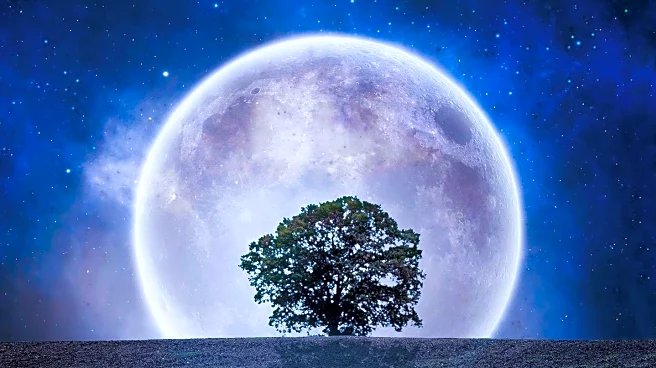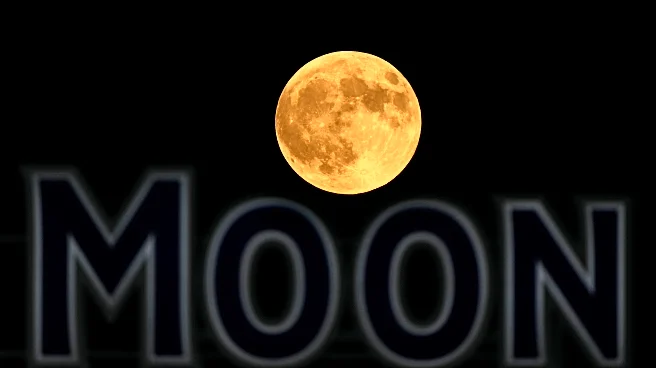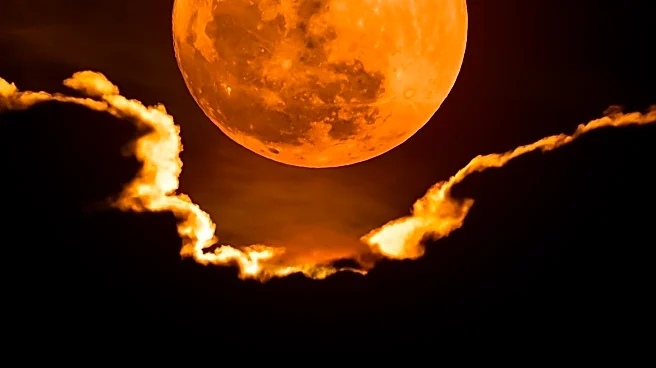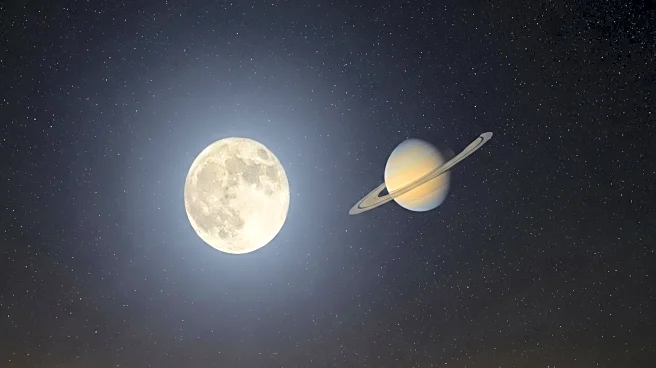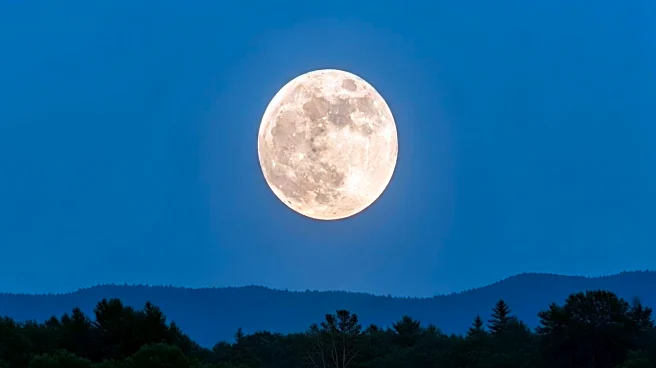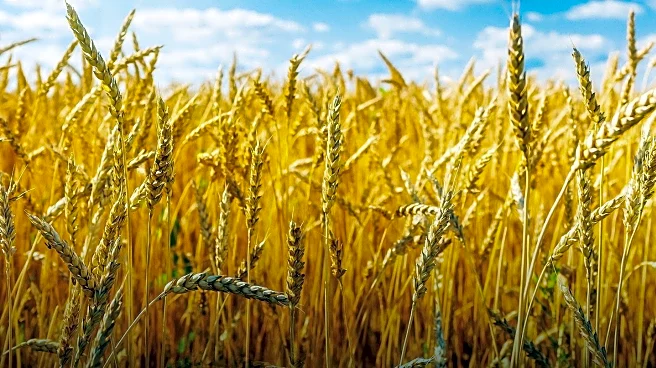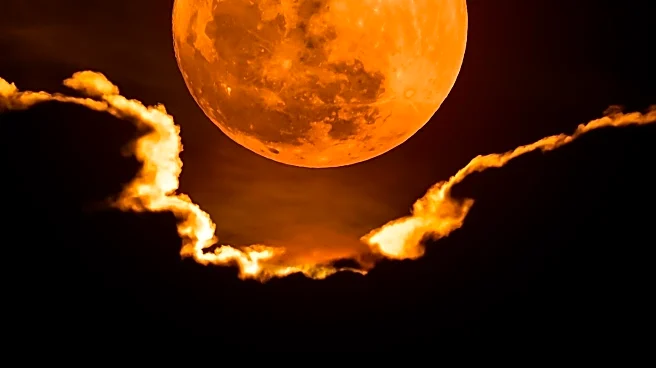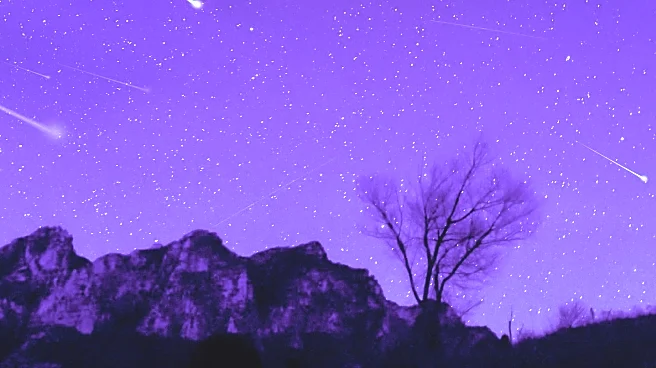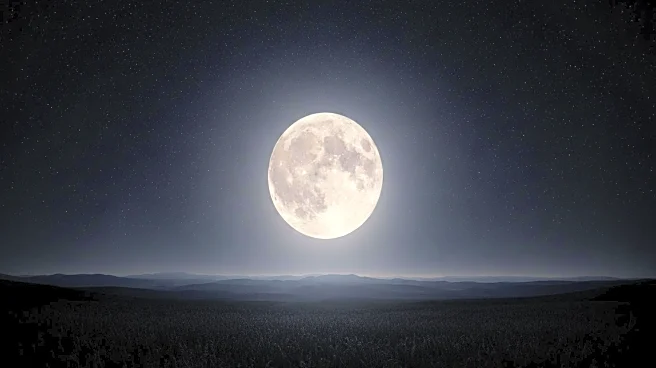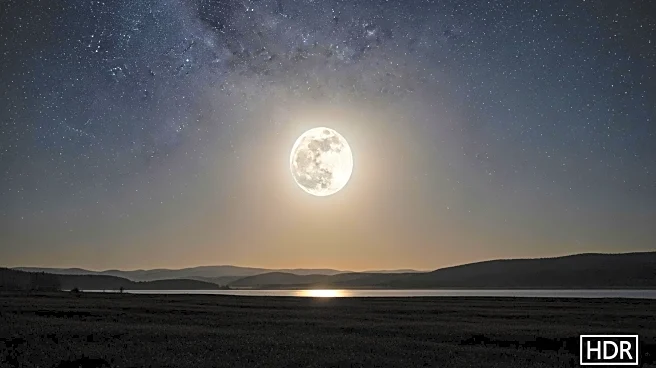What is the story about?
What's Happening?
The full moon in October, known as the Harvest Moon, will rise late on Monday and into early Tuesday, marking the first of three consecutive supermoons to conclude 2025. This supermoon will reach its peak fullness at 11:48 p.m. Eastern time on October 6, and will appear at 97 percent or greater fullness from October 5 to 8. A supermoon occurs when the moon is at its fullest and closest to Earth, making it appear up to 14 percent larger and 30 percent brighter than usual. The moon's closest approach to Earth is about 30,000 miles nearer than when it is at its furthest point. The next supermoons are scheduled for November 5 and December 4. The Harvest Moon is named for its proximity to the autumnal equinox, a time traditionally associated with the gathering of summer crops.
Why It's Important?
The occurrence of a supermoon is a significant astronomical event that captivates the public's interest and encourages engagement with natural phenomena. For astronomers and enthusiasts, it provides an opportunity to observe the moon's features in greater detail due to its increased brightness and size. The event also has cultural significance, as the Harvest Moon is traditionally associated with the harvest season, symbolizing abundance and preparation for winter. The visibility of the supermoon across various regions, including major cities like Washington, D.C., Boston, and Seattle, allows a wide audience to experience this celestial event, fostering a sense of shared wonder and appreciation for the natural world.
What's Next?
As the first in a series of three supermoons, this event sets the stage for continued public interest in astronomical phenomena. The subsequent supermoons in November and December will likely draw similar attention, providing further opportunities for education and engagement with the night sky. Weather conditions will play a crucial role in the visibility of these events, with clear skies offering the best viewing experiences. Enthusiasts are encouraged to find locations with minimal light pollution to fully appreciate the supermoon, and to consider using architectural elements to enhance their viewing or photographic experiences.
AI Generated Content
Do you find this article useful?
